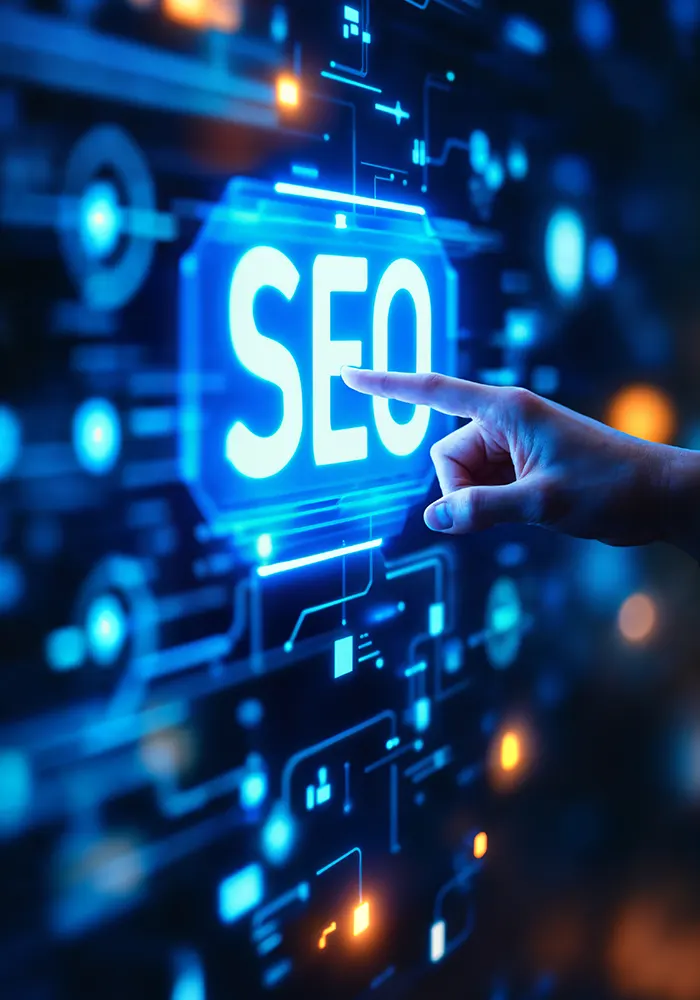Programmatic SEO: The Ultimate Guide for 2025
In the ever-evolving digital world, staying competitive requires adopting innovative strategies. Programmatic SEO (pSEO) has become a game-changing approach, allowing businesses to efficiently scale their SEO efforts. At Ad Hornets, we leverage these advancements to help organizations boost website traffic, drive conversions, and grow revenue.
This guide explores the strategies, techniques, and benefits of Programmatic SEO, providing actionable insights to help you unlock its full potential and elevate your digital presence.
What is Programmatic SEO?
Programmatic SEO is transforming the way businesses approach search engine optimization by automating traditionally manual processes. It leverages large datasets, dynamic page templates, and AI-driven content strategies to create scalable, high-quality SEO campaigns.
Unlike traditional SEO, which focuses on optimizing individual pages, Programmatic SEO automates the creation of hundreds or even thousands of pages tailored to specific search intents. By using tools, templates, and automation, businesses can efficiently generate relevant, user-focused content while maintaining quality.
For instance, a travel website can use Programmatic SEO to generate pages like “Best Hotels in [City]” for hundreds of destinations, each optimized for localized search terms. This approach saves time, scales effortlessly, and improves the chances of ranking higher on search engines.
Get Your Free Programmatic SEO Audit Today
Advantages of Programmatic SEO
Programmatic SEO is a game-changing tool for marketers, offering efficiency and scalability. Here’s a breakdown of its key benefits:
1. Scalability
Programmatic SEO empowers businesses to scale rapidly by automating the creation of thousands of pages. For instance, an eCommerce site can target keywords like “Best Air Fryers for Small Kitchens” or “Top Smartphones Under $500.”
2. Intent-Driven Content
This approach uses large datasets to craft content tailored to specific user queries, such as “Best CRM for Startups” or “Top Accounting Software for Freelancers.”
3. Improved Efficiency
Automation takes care of repetitive tasks like keyword research and page creation, enabling your team to focus on broader strategies and creative campaigns.
4. Data-Driven Optimization
Programmatic SEO thrives on analytics, using user behavior and market trends to refine content and keep it relevant.
5. Cost Savings
While there’s an upfront investment in tools, the automation cuts long-term labor costs and ensures consistency across thousands of pages.
6. Adaptability
As search engine algorithms evolve, Programmatic SEO enables quick updates across your entire content portfolio, ensuring your site remains competitive and relevant.
Programmatic SEO vs. Traditional SEO
Understanding the difference between Programmatic SEO and Traditional SEO helps determine the best approach for your business goals. Both optimize content for search engines but differ in scale and execution.
Traditional SEO focuses on manually crafting and optimizing individual pages, making it ideal for businesses with a limited number of pages that require high-quality, tailored content. For instance, a local restaurant might optimize pages for their menu, seasonal blogs, and services. This method is detailed and time-intensive, involving thorough keyword research, custom meta descriptions, and strategic backlinking.
On the other hand, Programmatic SEO prioritizes scalability and efficiency by automating tasks like generating pages for thousands of search terms. This approach is perfect for larger websites targeting a wide range of long-tail keywords. For example, a real estate platform might dynamically create pages for “2-bedroom apartments for rent in [City]” across multiple locations, minimizing manual work while achieving extensive coverage.
In summary, Traditional SEO is best for precision and depth, while Programmatic SEO excels in large-scale, automated campaigns. Choosing the right approach depends on your business size, goals, and resources.

| Aspect | Traditional SEO | Programmatic SEO |
|---|---|---|
| Optimization Approach | Focuses on manual keyword research, content creation, and optimization. | Uses automation, dynamic data, and AI-driven algorithms for streamlined workflows. |
| Scalability | Limited scalability due to time-consuming manual efforts. | Highly scalable, managing vast keyword portfolios and generating thousands of pages. |
| Targeting & Personalization | Broad targeting, often centered on general keywords and content. | Offers ultra-specific targeting with dynamic data, aligning precisely with user intent. |
| Adaptability to Changes | Slow to respond to algorithm updates or trends, requiring manual adjustments. | Quickly adapts using bulk editing and dynamic templates aligned with search trends. |
| Efficiency | Time-intensive, prone to inefficiencies and human error. | Automates repetitive tasks, saving time, reducing errors, and enhancing focus. |
| Content Creation | Manually creates and optimizes content for each individual page. | Generates bulk content using dynamic templates tailored to datasets for consistency. |
| Data Integration | Limited reliance on external data, focusing on basic keyword tools and analytics. | Utilizes large datasets, APIs, and AI tools for dynamic, data-driven strategies. |
| Cost & Resource Allocation | Requires significant manual labor, making large campaigns less cost-effective. | Higher initial setup costs but delivers greater ROI through automation and scaling. |
How Programmatic SEO Utilizes AI
AI has revolutionized Programmatic SEO, enabling businesses to scale operations and improve efficiency. Tools like OpenAI’s ChatGPT empower companies like Ad Hornets to streamline workflows, generate content, and leverage data effectively.
- Dynamic Content Creation: AI-powered tools create engaging, keyword-optimized content aligned with user intent. For instance, ChatGPT can generate multiple unique and relevant landing pages tailored to different audiences.
- Predictive Insights: AI analyzes search trends and user behavior to identify high-performing keywords and topics, helping marketers focus on the most impactful opportunities.
- Increased Efficiency: AI automates content generation by populating dynamic templates with data from large datasets, enabling the creation of thousands of pages in a fraction of the time.

How to Build a Programmatic SEO Campaign
Creating a successful Programmatic SEO campaign involves a structured process that combines data, automation, and strategic planning. Here’s how Ad Hornets approaches it:
Step 1: Perform Comprehensive Keyword Research
Identify what your audience searches for using tools like Ahrefs, SEMrush, or Google Keyword Planner. Focus on keyword patterns that indicate clear intent, such as location, price, or features. For instance, phrases like “affordable [product] under [price]” or “best [service] in [location]” can guide your targeting strategy.
Step 2: Compile a Robust Dataset
Gather data relevant to your industry, such as cities, product categories, or services. For example, an online learning platform might collect details on courses, instructors, and skill levels to populate dynamic pages effectively.
Step 3: Create Dynamic Page Templates
Design templates that include placeholders for dynamic elements like titles, headings, and meta descriptions. For a travel website, a template might look like: Title: “Top Things to Do in [City] for Families” Heading: “Discover [City]: Attractions for Every Visitor” These templates ensure a consistent structure while allowing flexibility for customization.
Step 4: Automate Content Generation
Use AI tools or scripts to populate your templates with the collected data, quickly producing thousands of unique pages. Ensure the content is engaging and relevant to avoid low-quality outputs that fail to resonate with users.
Step 5: Publish and Optimize Performance
Once the pages are live, monitor performance metrics like organic traffic, bounce rates, and conversions. Use this data to refine templates, improve content, and optimize targeting to achieve better results.
Programmatic SEO Strategies for Different Industries
Programmatic SEO can be customized to meet the specific needs of various industries, helping businesses tackle challenges and unlock opportunities. By balancing scalability with personalization, Ad Hornets helps create high-performing campaigns tailored to unique audiences.
For SaaS Companies
SaaS businesses often need to communicate their value to niche audiences. Programmatic SEO enables them to target specific search queries that reflect diverse user needs. For example, a SaaS platform offering project management tools could create pages like: “Best Project Management Software for Marketing Teams” “Top Tools for Remote Work in 2024” Data sources such as industry stats, customer reviews, or feature comparisons can enhance these pages, allowing SaaS companies to showcase tailored solutions rather than generic offerings.
For E-Commerce Platforms
E-commerce thrives on variety, making it ideal for Programmatic SEO. Retailers can create pages targeting product categories, price ranges, or brands. For instance, an electronics store might develop pages like: “Top Budget Laptops Under $700” “Best Noise-Canceling Headphones in 2024” These pages can include product specs, customer reviews, and detailed comparisons, ensuring they add value for shoppers. Programmatic SEO helps e-commerce sites rank for a wide range of queries tied to their inventory.
For Travel and Hospitality
The travel industry benefits greatly from localized content, and Programmatic SEO is a perfect fit. Travel agencies or booking platforms can target searches like: “Family-Friendly Hotels in [City]” “Best Weekend Getaways from [Location]” By integrating data on local attractions, seasonal trends, and user reviews, these pages can serve as comprehensive resources for travelers. Programmatic SEO ensures every destination and travel experience is well-represented to attract diverse audiences.
